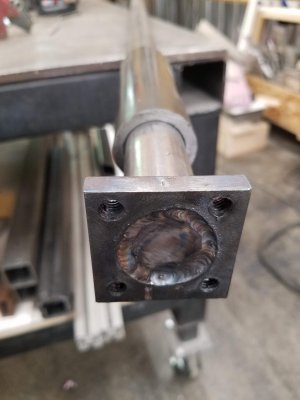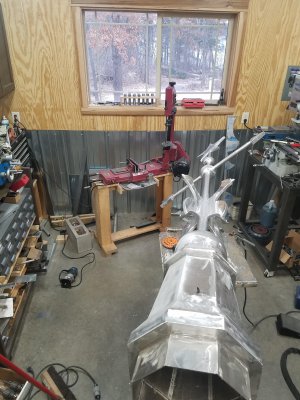Alrighty folks.
These are my first TIG beads that are worth showing.
1/8” plate
1/16” filler
Running about 100-102 amps
17cfm
#7 cup
3/32” tungsten
Sent from my iPhone using Tapatalk
So, to me it looks like your welds are too hot. Your temperature (amps) is pretty close but maybe bump it up to 115. Too hot of welds can come from too high of amperage, or ironically, too low of amperage and/or too long of an arc length.
If your amps are too low, you will spend extra time trying to get your weld puddle to form. While getting your weld puddle to form you are dumping heat into your metal, that is why the heat affected zone is so large. If you are holding the tungsten to far back and have too long of an arc, that will take more time to heat your puddle up and again, too much heat.
You want your torch to be moving. If you are sitting still, something is not right. Also, don't be afraid to just do some butt joints with no filler. They are easy to do and build confidence.
If you go to aluminum, make sure you clean it with a STAINLESS steel brush. If you don't do that, it will be a disaster. Also, clean with laquer thinner or acetone after brushing. Do not use brake cleaner as some YT channels suggest, because the stuff gives off noxious fumes.
I disagree about not using pulse. Using pulse can help you find that sweet spot that you are looking for. You can always turn it off, but without using all of the controls on the machine, you don't know what they can do for you.
Get a set of CK wedge collets instead of the craptastic split collets. You can thank me later.
1/2 cup size for gas flow. Size 7 cup = 14cfm. Your 17cfm is close enough. 3/32 tungsten is perfect IMHO. Lanthanated is what i use.
The first picture is from a land plane I built for my tractor. No filler rod and about 185 amps. Second picture is of a 9ft finial that I built for our church. All aluminum. Took me a month.
I would post some more pictures but am tired. Almost lost my life on Sunday and still recovering with multiple injuries.





